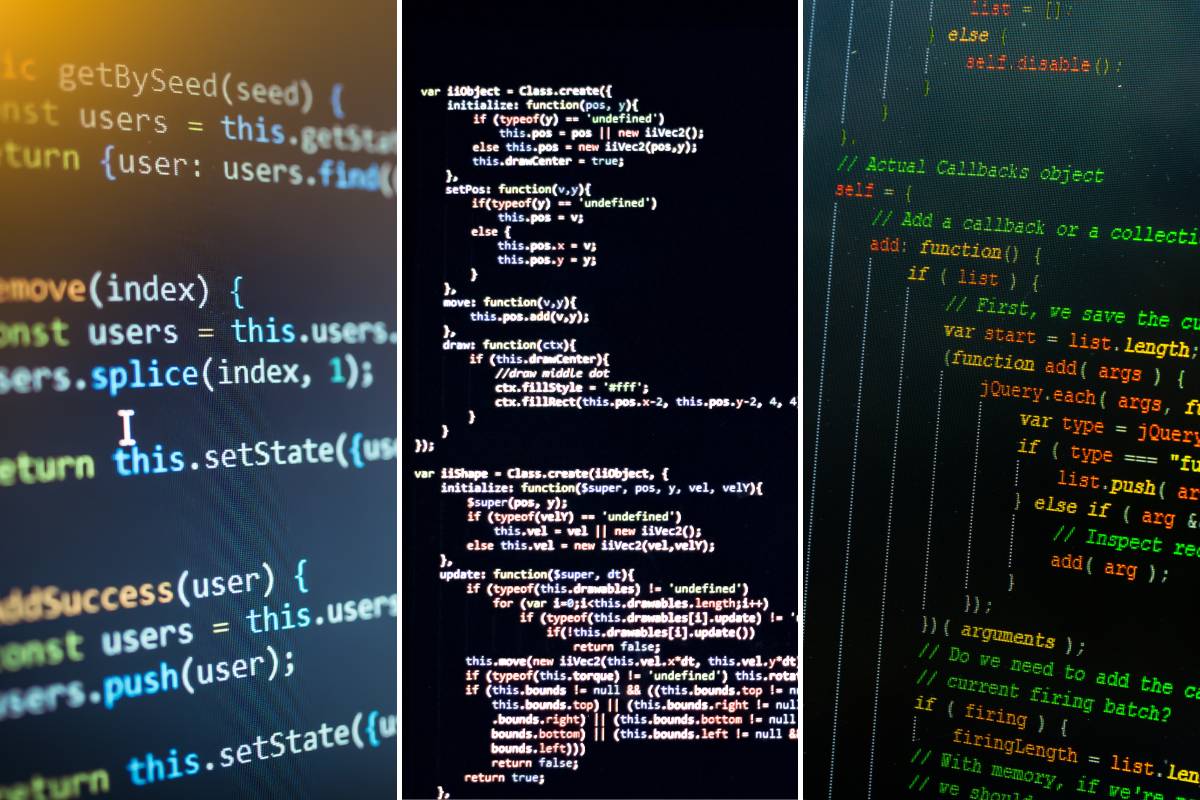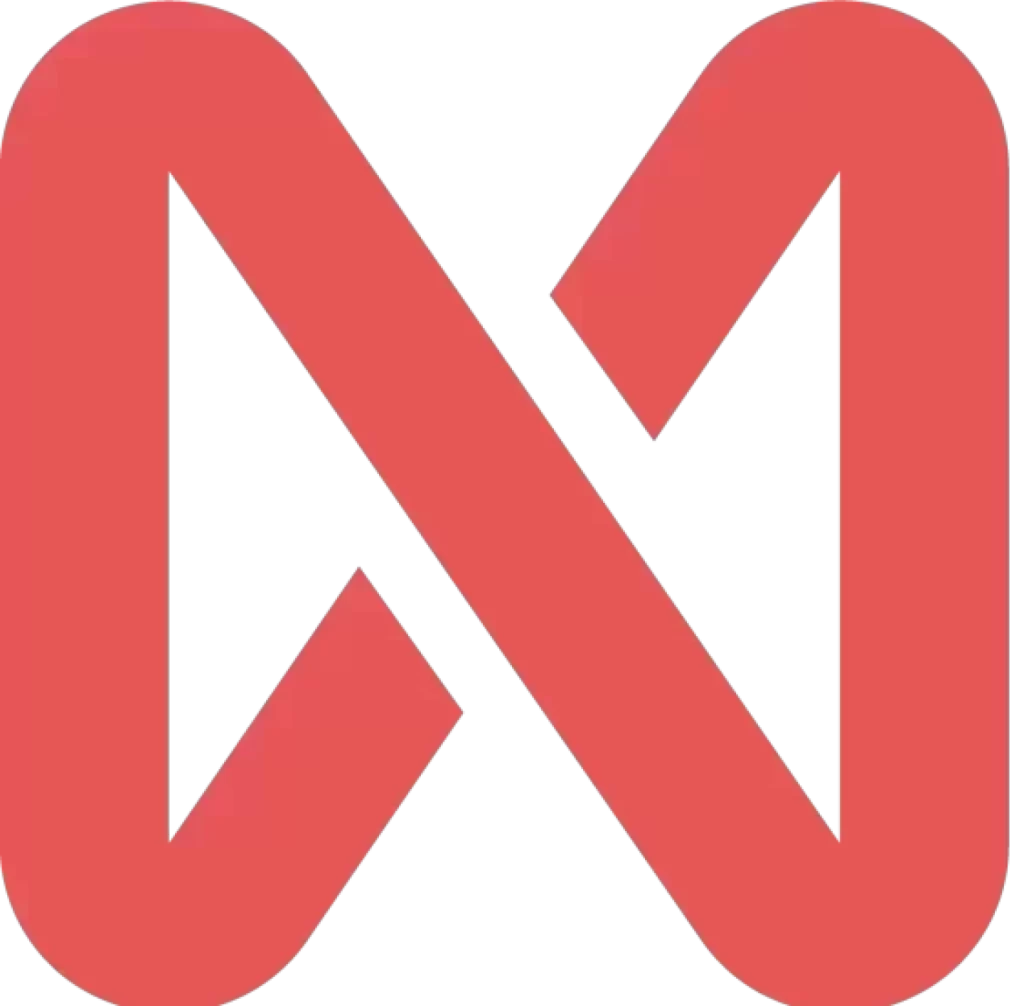Choosing the right framework is like laying the foundation of a project—it directly affects your team’s productivity, the application’s performance, and even the scalability of your business. In 2025, the market will continue to be shaped by robust, versatile, and ever-evolving frameworks. These technologies not only streamline developers’ workflows but are also essential for meeting the growing demands of projects requiring high performance, security, and flexibility.
👉Read more: 10 Frameworks that will dominate 2026 and when to use them.

In this article, we’ll dive into 10 frameworks poised to dominate (or remain dominant in) the development landscape in the coming year. We’ll also show you how NextAge, a leader in software development and system support, can be your strategic partner in unlocking the full potential of these tools!
10. Flutter
Flutter, developed by Google, is one of the top choices for cross-platform mobile development in 2025. It enables developers to create native applications for Android, iOS, web, and even desktop from a single codebase, saving both time and resources. With its own rendering engine, Flutter delivers high-quality visual interfaces and consistent performance.
Unlike other cross-platform tools, Flutter doesn’t rely on native components from the platforms it targets. This gives developers complete control over the design, allowing for highly customized interfaces. Additionally, features like Hot Reload accelerate the development process, enabling quick and efficient adjustments.
When to Use Flutter:
- Mobile apps for Android and iOS: Ideal for projects requiring a single codebase for both platforms.
- Interfaces needing high customization: Perfect for apps that demand unique, consistent designs.
- Solutions requiring rapid time-to-market: For projects with tight deadlines that still demand a high-quality product.
For example, a bank aiming to create a unified app for Android and iOS with consistent functionality and a customized design can choose Flutter to reduce costs and development time while delivering an exceptional user experience.
9. Laravel
Laravel is one of the most popular PHP frameworks, renowned for its elegance and developer productivity. It provides powerful tools such as a simplified routing system, the Eloquent ORM for database management, and Blade, its templating engine. These features make Laravel an excellent choice for building modern applications quickly and efficiently.
Laravel also comes with native support for authentication, queues, notifications, and more, minimizing the need for external packages and ensuring a consistent development experience.
When to Use Laravel:
- Custom online stores: E-commerce platforms requiring specific features and third-party API integrations.
- Systems needing robust authentication: Applications with restricted areas or multiple access levels.
- Projects prioritizing development speed: Solutions that need to be delivered quickly without sacrificing quality.
For example, a custom e-commerce platform requiring unique functionalities like complex shipping calculations or integration with regional payment gateways can be developed rapidly and effectively using Laravel.
8. ASP.NET Core
ASP.NET Core is Microsoft’s platform for developing modern web applications and high-performance APIs. It combines scalability, security, and seamless integration with the Microsoft ecosystem, making it the ideal choice for enterprise projects that demand robustness and reliability. Additionally, its cross-platform support enables applications to run on Windows, Linux, and macOS, broadening its range of use cases.
The framework offers advanced features such as built-in dependency injection, a lightweight and modular HTTP pipeline, and support for cutting-edge REST APIs. Its seamless integration with Microsoft Azure simplifies cloud application development and management, while tools like Visual Studio streamline the development process.
When to Use ASP.NET Core:
- Enterprise projects utilizing Microsoft services: Ideal for businesses already leveraging solutions like Azure, Dynamics, and Office 365.
- Cloud-hosted applications on Azure: Maximizes Microsoft’s cloud infrastructure and services.
- Solutions requiring security and high performance: Such as financial systems, management platforms, and corporate portals.
For example, a large organization can use ASP.NET Core to build a management system integrated with tools like Microsoft Office 365 and Azure Active Directory, creating a secure and scalable collaborative environment.
7. Express.js
Express.js is a minimalist and efficient framework for Node.js, designed to streamline the creation of web applications and REST APIs. Its flexible approach allows developers to quickly configure and customize projects, making it ideal for agile and lightweight solutions.
As part of the Node.js ecosystem, Express.js combines performance with simplicity. It removes the complexity of more robust frameworks, focusing on essential functionalities. This makes it the perfect choice for MVPs (Minimum Viable Products), fast APIs, and applications adopting microarchitectures.
When to Use Express.js:
- Lightweight and fast REST APIs: Perfect for services that need to be set up and scaled easily.
- MVPs requiring rapid development: Ideal for prototypes and early-stage launches needing quick delivery.
- Applications using microservices: Supports modular projects with independent components that interact seamlessly.
For instance, a startup aiming to launch an initial version of a delivery app can use Express.js to rapidly develop a functional backend API, allowing them to test and refine the product in the market with agility.
6. Django
Django is one of the most powerful and reliable frameworks in the Python ecosystem, widely used for developing complex and scalable applications. Its “batteries included” philosophy provides a comprehensive set of built-in features, such as authentication, ORM, and an administrative interface, enabling fast and efficient development.
With integrated protections against common attacks like SQL Injection and Cross-Site Scripting (XSS), Django offers robust security. Its flexible architecture also makes it an excellent choice for projects that need to grow sustainably over time.
When to Use Django:
- Projects with high security demands: Such as financial platforms, medical applications, or systems handling sensitive data.
- E-learning platforms or SaaS: For solutions requiring rapid scalability and advanced functionality.
- Fast-paced development projects: Leveraging its built-in tools to deliver projects on time without compromising quality.
For example, a fintech company developing an investment management system, where data security and regulatory compliance are paramount, would find Django to be an ideal framework for building a reliable and scalable application.
5. jQuery
Although a veteran in the world of web development, jQuery still holds a relevant place, particularly for projects requiring the maintenance of legacy systems or quick solutions. Its simplicity and compatibility with older browsers make it a practical choice for minor adjustments and enhancements without the need for extensive code rewrites. It simplifies DOM manipulation and provides robust support for animations and Ajax requests.
When to Use jQuery:
- Legacy projects: To maintain or expand applications already using the library.
- Small interface tweaks: For implementing visual or functional improvements without rewriting existing code.
- Quick enhancements to established systems: Adding lightweight animations or Ajax support in a simple and effective way.
Despite the rise of modern frameworks, jQuery remains a reliable solution in 2025 for optimizing specific tasks and enhancing existing interfaces without compromising system stability.
4. Node.js
Node.js is far more than just a JavaScript runtime—it has revolutionized backend development by enabling developers to use the same language for both client and server-side programming. Built on Google’s V8 engine, Node.js features an event-driven, non-blocking I/O architecture, making it ideal for applications that demand high scalability and low latency.
It shines in projects requiring rapid responses and efficient data processing, such as real-time communication platforms and robust APIs. Furthermore, its vast package ecosystem on npm accelerates development and simplifies the implementation of new features.
When to Use Node.js:
- Real-time applications: Such as chat platforms, streaming services, and multiplayer games.
- Backend APIs: Perfect for microservices architectures requiring speed and scalability.
- High-scalability systems: Event-driven servers or IoT solutions handling large volumes of data.
At NextAge, we harness the power of Node.js to deliver high-performance, scalable backend solutions. Whether you’re building a modern API or a real-time communication platform, our team is ready to help your business implement technologies that keep pace with your goals and growth.
3. Vue.js
Vue.js is a progressive framework that combines simplicity with power, offering an easy learning curve without sacrificing advanced functionality. Known for its flexibility, Vue.js allows developers to build anything from small components to large-scale Single Page Applications (SPAs) with a high degree of customization.
This framework adapts to the size and complexity of your project. It’s particularly effective for projects where simplicity and maintainability are top priorities. Additionally, Vue.js benefits from an active community and official support for tools like Vue CLI and Vue Router, ensuring fast and organized development.
When to Use Vue.js:
- Lightweight, performance-focused applications: Perfect for projects requiring fast, responsive user interfaces.
- Projects with smaller teams: Its simplicity makes it accessible for teams with less experience or limited resources.
- Custom user interfaces: Ideal for projects requiring creative freedom and a high degree of personalization in design.
For example, consider a startup developing a task management app focused on user experience. Vue.js enables the creation of a lightweight, functional, and highly customizable interface, making it an excellent choice for MVPs that need to be delivered quickly.
2. Angular
Developed by Google, Angular is one of the most robust and comprehensive frameworks for front-end development. More than just a library, it offers an entire ecosystem for building large-scale applications with high modularity. Its foundation in TypeScript ensures code security and scalability, while features like dependency injection and advanced routing make it easier to manage complex projects.
Angular excels in projects like ERPs and CRMs, where multiple modules and functionalities need to be integrated in a structured and efficient manner. Additionally, tools like the Angular CLI streamline the development process, speeding up both implementation and maintenance.
When to Use Angular:
- Large-scale enterprise systems: Such as ERPs and CRMs, designed to handle vast amounts of data and numerous users.
- Applications with multiple modules and features: Platforms requiring complex integrations and independence between system components.
- Projects demanding high performance: Where user experience and system responsiveness are critical, such as corporate dashboards and BI tools.
For example, an ERP that manages the operations of a large enterprise, integrating departments like finance, HR, and logistics, is a classic use case for Angular. Its modularity allows each functionality to be developed in isolation, keeping the system organized and scalable.
1. React
React is one of the most popular frameworks for front-end development. Created by Meta (formerly Facebook), it revolutionized UI development by introducing a component-based approach and leveraging the Virtual DOM to ensure fast and efficient updates.
React is particularly powerful for building highly interactive and responsive interfaces. It simplifies the development of platforms that require complex components and frequent updates, such as analytical dashboards, SaaS platforms, and even mobile apps built with React Native.
When to Use React:
- Highly interactive interfaces: Dashboards, admin panels, and systems with extensive visual interactions.
- Mobile apps: Development with React Native to create native apps for Android and iOS from a single codebase.
- Real-time applications: Chat systems, streaming platforms, or any service that depends on instant updates.
For instance, imagine a dashboard for managing real-time data, such as financial metrics or marketing campaign performance. React enables the creation of fluid interfaces that update instantly as data changes, ensuring a seamless user experience.
How to Choose the Right Framework for Your Project?
Choosing the right framework might seem challenging, but the decision becomes clearer when you evaluate your project’s specific requirements and the features each technology offers. Here are the key criteria to consider:
- Project Type: Are you building a web, mobile, or backend application? Frameworks like React and Angular excel in front-end development, while Django and Node.js are standout choices for back-end. For mobile projects, Flutter is a leading option.
- Technical Requirements: What does your project need? High performance, modularity, or enhanced security? For instance, Angular is ideal for large-scale enterprise systems, while Django is perfect for projects with strict security requirements.
- Timeline: How quickly do you need to deliver? Frameworks like Express.js and Laravel offer the agility needed for MVPs and projects with tight deadlines.
- Budget: What’s your investment margin? Tools like Node.js and Laravel provide scalable and cost-effective solutions.
Selecting the right framework is not just about the technology—it’s about how it aligns with your business goals and project vision.
At NextAge, we make this choice easier with services like strategic assessments and Outsourcing 2.0. Our expertise across a wide range of frameworks enables us to deliver tailored, efficient solutions. Get in touch today to discover how we can help your business reach new heights with the right technologies! 🚀






